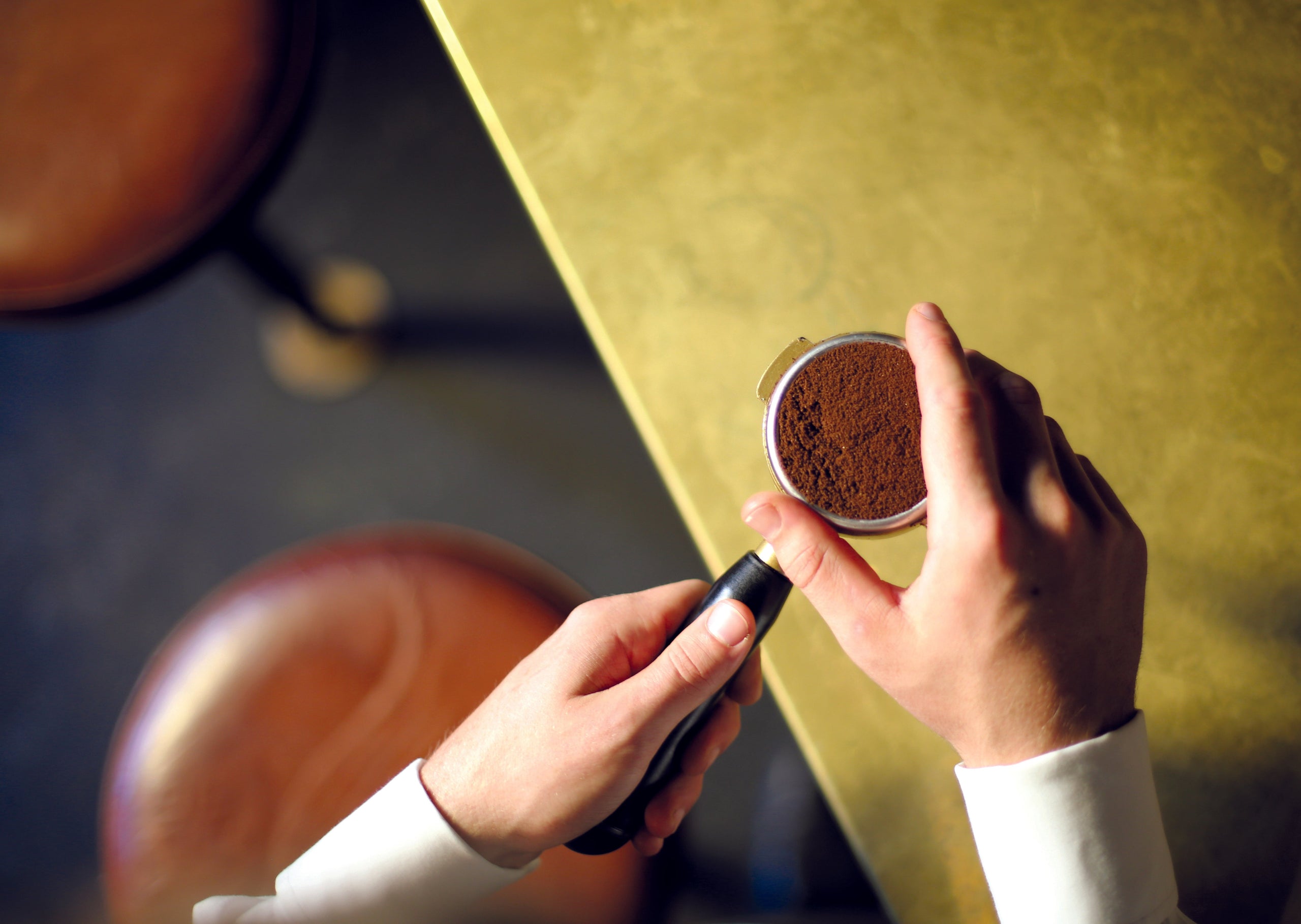Whether it be a morning cappuccino or an Instagram-worthy latte, most cups of coffee are easily recognisable; however, the same can't be said for the macchiato.
Even between professionals and avid macchiato drinkers, you’re sure to get different (and strong) opinions on what you should be getting in your cup when you order one. We thought it was time to provide some clarity on what a macchiato is, the different kinds, and what you’re likely to get when you order each.
Origins of the Macchiato
Nowadays, the macchiato will have different meanings depending on where you are. However, the best place to start is at the beginning. Like most espresso drinks the word itself is derived from Italian; it means “stained” or “marked”, because of the effect when you combine the milk and espresso.
The macchiato first started being made for those looking to get a caffeine fix in the afternoon. Cappuccinos were generally only used in the morning. Macchiatos were made to be lighter than an espresso shot but stronger than a normal cappuccino, becoming the perfect sweet spot for those looking for a bold but rich taste.
The foundation of a great macchiato starts with high-quality espresso. Using premium, expertly roasted coffee beans ensures the depth and richness that define this iconic drink. Discover our selection of premium espresso beans.
General Definition of a Macchiato
With all that said, what exactly is a macchiato? In general terms it's an espresso with a splash of milk, essentially “staining” the coffee.
“A splash of milk” is very subjective. It could mean a dash, a teaspoon, two teaspoons, or more. Most of the time, it will be just enough milk to smooth out the espresso and to add body to the drink.
This is where you may see some strong opinions from various sources on what makes a macchiato; that small amount of milk, and precisely how much must be added to define a proper macchiato coffee.
Variations of the Macchiato
The humble macchiato has grown over time into two general categories: The espresso macchiato, and the latte macchiato.
The espresso macchiato is the original form. It is also known as a traditional macchiato or caffè macchiato in Italy. The second variation, latte macchiato, has become more popular over the years as coffee culture has developed internationally.
Coffee lovers typically agree that a true macchiato is an Italian, traditional espresso type.
The latte macchiato is dubbed an “Americanised” variation, but at least sticks to just espresso and milk. Starbucks takes the latte to an even more American level by adding vanilla syrup and caramel sauce - which is pretty far from the simple coffee we started with.
The Espresso Macchiato (Caffè Macchiato)
The espresso macchiato is comparable to a mini, foamy flat white. A small amount of milk “stains” the espresso to make it more subdued, but it is still largely undiluted in flavour compared to the milkier latte or flat white.
Most espresso-based drinks have more milk or foam than the espresso itself; however, the macchiato has more espresso, a little milk and sometimes a bit of foam on top.
It's ideal if you're looking for something similar to a cappuccino but with less milk. You'll be getting a stronger, richer espresso flavour without being hit with the complete strength of an espresso shot on its own.
The Latte Macchiato
The latte macchiato is a lot more complex in how it's made. Its signature layered look comes from starting with a third to a half glass of steamed milk. A shot of espresso is poured over very slowly or using the back of a spoon. When it's poured correctly into the centre, a dot or “stain” is created in the steamed milk. Finally, a layer of foam is added.
You'll want to get a latte macchiato if you only want a hint of espresso flavour. Steamed milk makes the espresso a lot easier to drink - so if the espresso is too bold, you might like the latte version better; however, it isn't a stronger drink despite being taller in size.
A normal latte might be more suitable if you need a bigger kick of energy as this would have two espresso shots.
Milk Texture in Macchiatos
A key difference between the above variations of macchiatos is the treatment of the milk. An espresso macchiato will have textured milk, and the latte version will have steamed milk.
Textured milk is aerated from cold to the desired level of foam before the frothed milk is brought to temperature. The silky mouthfeel adds smoothness to the espresso.
Steamed milk is heated and aerated at the same time. This incorporates microbubbles of air into the milk and creates a creamier milk. Steamed milk is denser foam; it is not frothed so much as expanded by the incorporation of the tiny bubbles.
More Variants: Long Macchiato vs. Short Macchiato
Unfortunately, the confusion doesn't stop there. Espresso macchiatos are also broken up into short and long variations. On top of this, you might be getting a different ratio of ingredients depending on where you're ordering.
The Short Macchiato
A traditional short macchiato is a single shot of espresso with a splash of textured milk. A short macchiato topped-up is also a single shot of espresso, but the cup is filled with textured milk rather than left partly empty.
The Long Macchiato (or the 'Long Mac')
We then have the long macchiato, a concoction served in a latte glass and originated in Australia. A traditional long macchiato is a double shot of espresso with a dash of textured milk and most of the glass left empty.
If you're ordering a 'long mac' in Perth, you'll most likely get a double shot of espresso with the glass filled with textured milk (similar in ratio to a latte). In Melbourne, you'll get two espresso shots, the glass half-filled with water and then a dash of textured milk on top.
Overall, ordering a short or long macchiato will get you something different depending on the cultural influences of where you are; however, a short macchiato usually means there will be less espresso and a long macchiato usually means there will be a double espresso.
Espresso Macchiato vs. Latte vs. Cappuccino
To better explain exactly what a macchiato is, it might be helpful to compare it to two of the most popular espresso-based drinks: latte and cappuccino. You'll find these on the menu of any coffee shop and most people have a general idea of what they are.
How Macchiato differs to Latte
Ingredients-wise, an espresso and a latte variants both have espresso and milk. However, a latte has a thin layer of foam on top.
Lattes tend to be more diluted in flavour as well, particularly if you are ordering larger sizes with more milk. The ratio of milk to espresso is higher in a latte for a creamier, milder taste, whereas a macchiato will have a higher proportion of espresso for a more coffee-forward flavour.
It can be even simpler than that if you are making one at home. Many Italian households will make a basic 'latte' on the stovetop with a moka pot and hot milk - no need for a coffee machine or milk steamer. Quite different from what you would see in a café, but still delicious for those who enjoy milk-based coffees.
How Macchiato differs to Cappuccino
A cappuccino has similar ingredients to a latte but is in a different ratio. Ordering a cappuccino will typically get you an equal ratio of espresso to steamed milk, topped with milk foam. You may also get a dusting of chocolate powder to complete the drink.
In terms of appearance, a traditional macchiato is darker than a latte or a cappuccino since it only has a small amount of milk or milk foam on top rather than a lot of foamed milk mixed in.
Latte art is also a differentiator if you are looking at the glass - a macchiato will have the distinctive marked milk, while lattes and other drinks with higher milk ratios tend to have a heart or similar (depending on how artistic your barista is feeling).
Making your next order easier
To recap, coffee shops will typically serve:
- An espresso macchiato (and a short macchiato) as a shot of espresso with a dash of milk.
- A latte macchiato as a shot of espresso with steamed milk added.
- A long macchiato as a double espresso with either a dash of milk, water and a dash of milk - or if you're in Perth, a long mac will likely be topped up with textured milk.
If you want less milk in your coffee but find espresso alone too bold, a long or short macchiato is a great alternative. Give it a try!
We hope this guide helps next time you're at your favourite café. If you want to make a great macchiato at home, why not shop our range of coffee products - or enjoy savings with subscription coffee and have your next order delivered right to your door.
Read next: Australian Coffee Types Explained.





